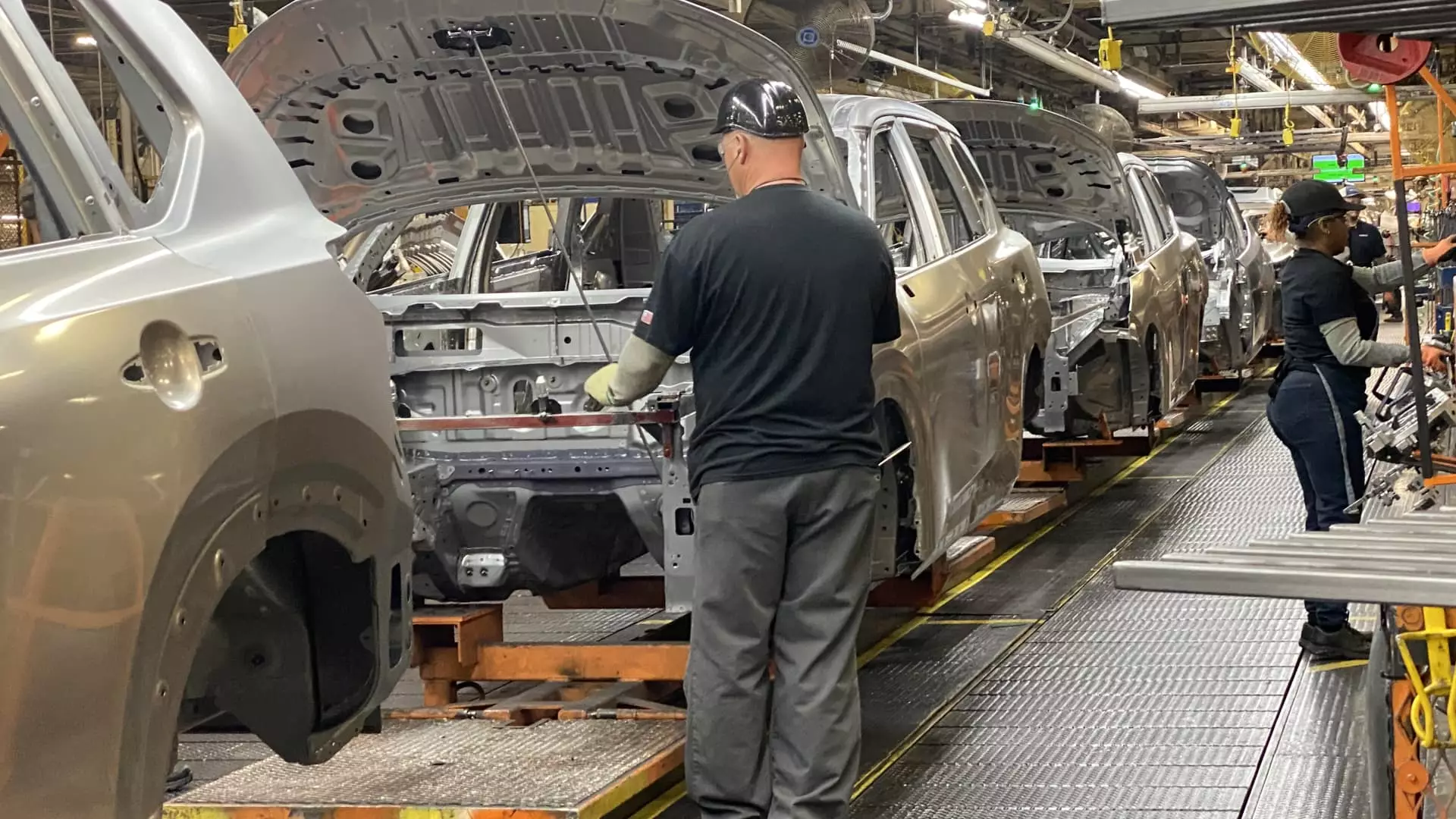In an age where globalization has tethered economies to one another like a delicate web, former President Donald Trump’s imposition of a staggering 25% tariff on imported vehicles presents an alarming point of inflection for the automotive industry. Analysts predict that this policy shift could precipitate a catastrophic decline in vehicle sales, potentially jeopardizing millions of jobs and causing a ripple effect throughout the economy. This isn’t just a simple policy decision; it’s a bitter reminder of how short-term fixes can engender long-term consequences. The fiscal ramifications are already staggering, with estimates ranging from $110 billion to $160 billion in increased costs for the industry, fundamentally reshaping how cars are produced and marketed.
The automotive landscape is teetering on a precipice, where today’s decisions may reverberate for years to come. A recent report suggests that price surges could elevate costs substantially, predicting average vehicle price increases of up to $4,000. For an industry already grappling with rising prices and consumer demand decay, this may spell disaster. The realities of this tariff could sow distrust in American markets, leaving consumers wary of making purchases as costs skyrocket yet again.
Structural Shifts: Navigating New Market Dynamics
Felix Stellmaszek, a leading automotive strategist, notes that this moment may indeed be the most consequential in the history of the auto industry. What we’re witnessing isn’t merely the result of a policy shift; it’s an oceanic wave of change that pushes automobile manufacturers to rethink fundamental aspects of their operations and supply chains. In this upheaval, even domestic companies like Ford and General Motors are not shielded from the liabilities that come with these tariffs.
What is particularly disconcerting is how these changes might alter consumer behavior in unpredictable ways. With autos becoming less affordable, consumers are likely to postpone purchases or seek alternatives. The anticipated reduction in vehicle sales – possibly in the range of 2 million fewer units annually – signifies not just a downturn for automakers, but a wider economic malaise, wherein individual spending patterns are altered. The tangible pressures of inflation are further complicating this already precarious scenario, with consumer sentiment sagging under the weight of economic uncertainty.
Price Tag Pain: Consumers Bear the Burden
As automakers face the daunting crossroads of soaring operational costs and diminished consumer willingness to spend, the repercussions will almost certainly be felt most acutely by the end users themselves. The expectation is that manufacturers will pass on these increased costs to consumers, leading to a grim cycle of rising prices and falling demand. Indeed, the automotive market often operates like a finely tuned machine, but introduce tariffs, and it risks grinding to a halt, drowning in complicated price adjustments that consumers find hard to swallow.
Recent data shows that the average cost of a new vehicle has ballooned to nearly $50,000, while financing costs climb higher at a time when many Americans are already feeling the pinch. New auto loan rates are creeping towards alarmingly high levels, which could deter any potential buyers from entering the market. What’s particularly distressing is that the anticipated increases in vehicle prices could also cascade into everyday consumer goods, thereby squeezing household budgets even tighter.
In the coming months, consumers may find themselves in a position where the dream of a new vehicle becomes a distant reality, prompting many to either hold onto their current cars longer or gravitate toward the used market. The combined effect of economic factors may well lead to the inescapable conclusion that a substantial portion of the American public is simply priced out of the automobile market, leading to further stagnation.
At its core, the impact of Trump’s automotive tariffs serve as an unsettling reminder of the intricate dance between politics, policy-making, and economic realities. As the automotive world braces for this storm, it becomes evident that effective solutions won’t simply emerge from bold proclamations in Washington, but from thoughtful, integrative approaches that consider all stakeholders involved.
What remains to be seen is whether the automotive industry can adapt to these newly imposed realities without sacrificing their consumer base, and whether policymakers will reckon with the socioeconomic fallout their decisions can incite. The vehicle landscape is in tumultuous waters, and navigating this complexity requires a robust dialogue that prioritizes innovation over polarization, acceptance over denial. The curve ahead is sharp; we must proceed with caution.

